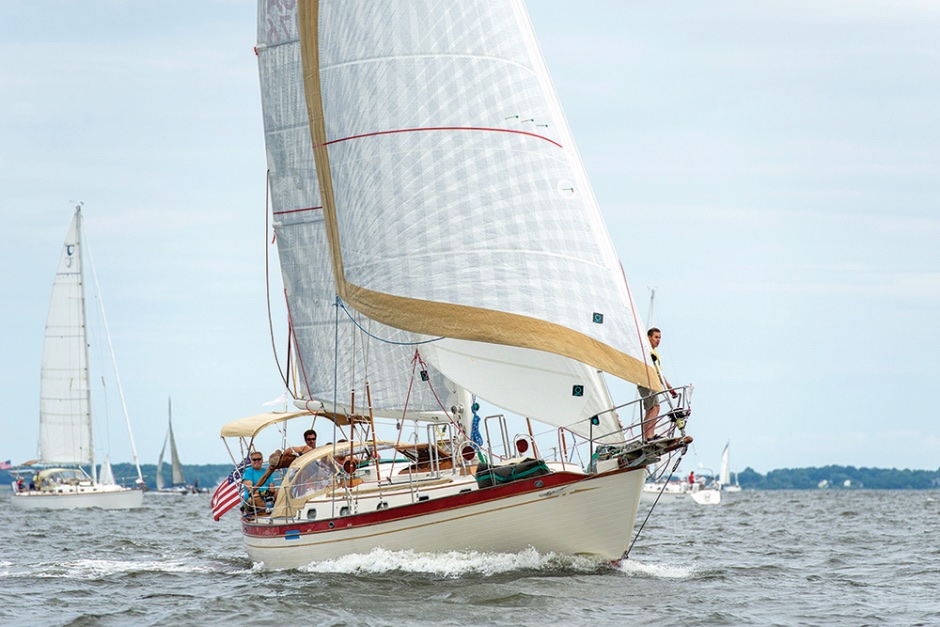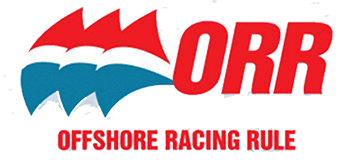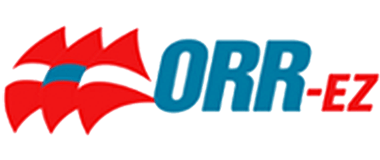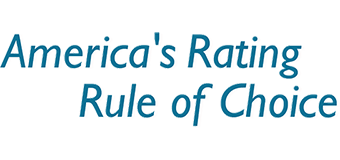Joe Cummings bought his Tashiba 40 back in 2011, with no assumptions. In the predictably light air of the Chesapeake, relatively lighter boats usually dominate the racing. So Joe really didn’t have a whole lot of hope for racing success when he brought Shuang Hsi down from Maine. The boat is a Robert Perry designed 30,000 lb cutter, that sits on a 34.5 foot waterline.

Joe says, “She is ‘full of creature comforts.’ I simply wanted to do the Annapolis to Bermuda Race and not be last. I wanted to have fun, be safe and use the A2B as a test of all our systems. But, in the race, we had a 20-hour spinnaker run where I realized that if we could fly the kite, we could do well. And so, I started working with the crew to really improve sail trim.”
The results fell into place, and Joe and crew won their class in the 2016 and 2018 Annapolis to Bermuda Races, scored with ORR. Joe describes his crew as, “Eric Konieczynski, my master trimmer! Awesome. Skip Gresko, my foredeck guy. Awesome. Gotta keep that kite inline on hoists, takedowns and gybes. Mike Crothers, solid helmsman and overall knowledgeable sailor. He has his own boat, so he is always making contributions to items that need fixing. Andrew Brown is a solid helmsman and overall knowledgeable sailor. Kyra Tallon is my Navigator and she makes a mean gazpacho. Food is a critical component of a happy, high performing crew. Steve Walsh is awesome pit and overall muscle wherever we need it. Steve, Mike, Andrew and I have all done two Bermuda Races together. Eric, Skip and I have done four together. Having that many crew with that much experience together really helps a lot.”
It’s fairly predictable to find blue-water conditions beneficial to boats like the Tashiba 40, but what about those zephyrs that ply the Chesapeake? Joe and crew won this year’s Race to Rock Hall, a short distance race that saw a peak gust of 4.7 knots—but most of the day the breeze was in the 1—3 knot range.
“I was amazed we won the Rock Hall Race," Joe says. "A huge factor was choosing the right tack at the start. The next big make or break moment was squeezing past (windward mark) 'E.' The current was about a knot and the breeze (if you can call it that) was about 2 to 3 kts. We watched Actaea, from about a half-mile back, head for the mark and then get pushed down and have to make a circle back to make the mark. So we did everything we could to head south against the current. We cleared that mark by about 5 feet. If we had not cleared it, I'm sure we would have blown a lot of time getting around it. The only sail in our inventory that allowed us to make the kind of progress we did was a code zero. Without it, we'd have never made it.”
Joe is on pace to win another High Point in the Chesapeake Racer Cruiser Class, which is scored using ORR-Ez. It’ll be a repeat for them: they took High Point in 2017. Joe was a founding member of CRCA the fastest growing class on the Chesapeake. CRCA started with 20 boats, three years ago, and now has 70 registered and scores races with ORR-Ez. Joe says, “We find the flexibility of the ORR and ORR-Ez product, in terms of the ratings it provides for different wind speeds and course configurations, gives us a fair chance in every race.”
Fun, fairness and success…you can’t ask for more than that when it comes to sailboat racing!
Tim Ford is an ORR-Ez rep on the northern Chesapeake, former president of CBYRA and chair of the Chesapeake Racer Cruiser Association Technical Committee. He owns, races and repairs a 5.5-meter sportboat, an i550. Photo by Al Schreitmueller/SpinSheet


